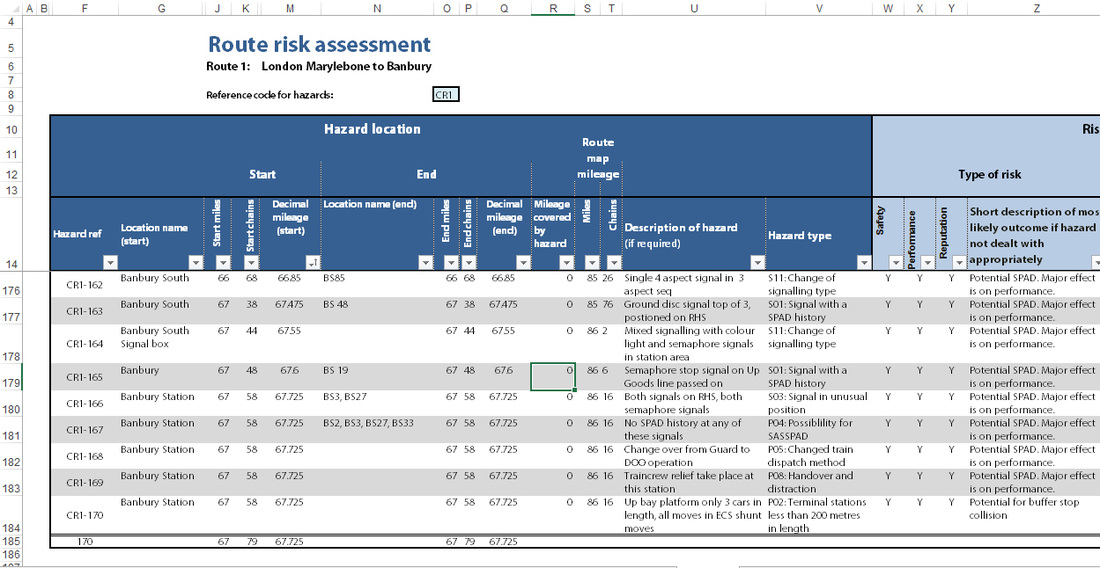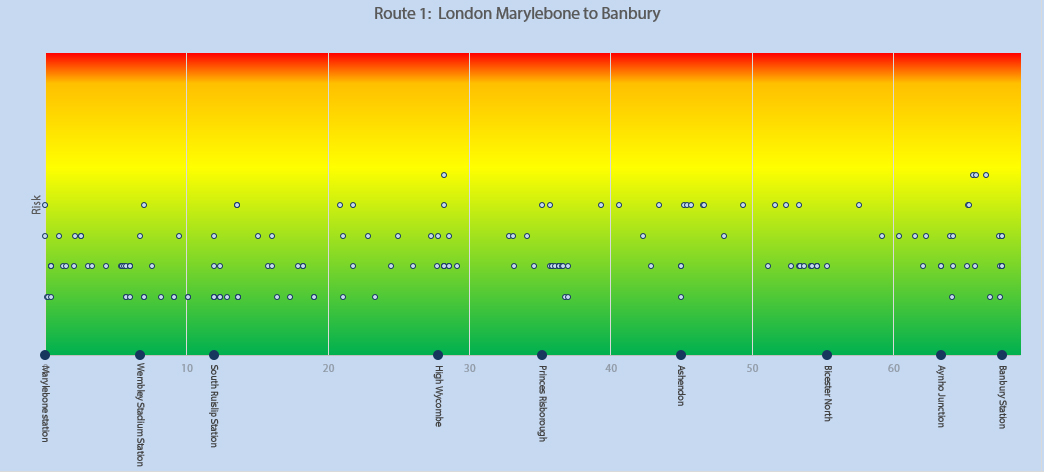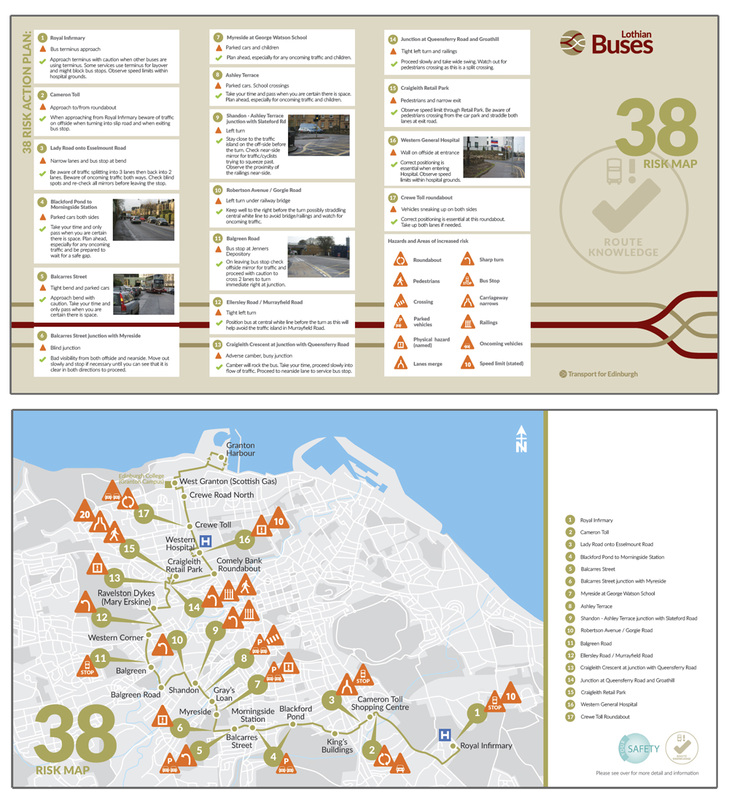Route risk
|
Each route of a passenger transport operation (bus, tram or rail) will have hazards that the driver needs to understand and be able to deal with. These hazards may include road crossings, parked vehicles, signals or signs that are hard to pick out, areas of low adhesion and many others.
Hazard identification and risk assessment We can help to identify potentially hazardous events using available records (accident and incident data for example) coupled with site visits and workshops with employees. Our spreadsheet risk assessment tool identifies the most vulnerable group (employee, passenger), the most likely outcome and its probability of occurrence. In addition to safety risks our process also assesses other factors that may be of significant importance to a railway business, for example whether:
The hazard identification and risk assessment process often leads to an improved awareness of hazardous events and how these could be better prevented, controlled or managed. Visualising the risks
We can create route maps that use simple icons to show where the hazards exist along a route. These are linked to photographs of the actual location, descriptions of the hazard and the things that a driver can do to reduce the risk. The route maps can be produced as wall charts (for messrooms and display cases), as leaflets or as part of a training or operational manual. Blank maps are a useful tool in driver training to encourage trainees to identify and plot hazards on their routes, and to encourage discussion about how they can deal with them successfully.
|
|
If you'd like us to talk to you about how we may be able to help, please Contact Us.
|





